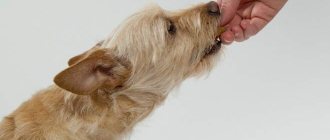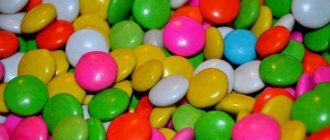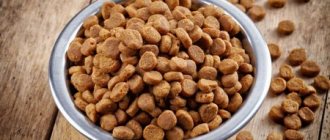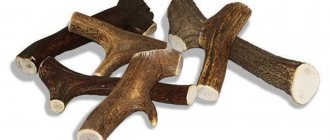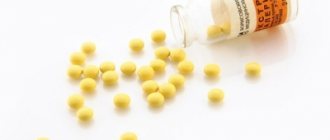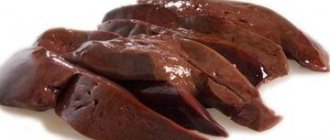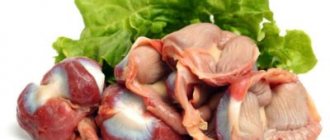Sweets include all substances that contain glucose and increase sugar levels in the bloodstream. Sugar in its pure form, used for making confectionery and chocolate, contains toxic substances. As a result of eating a large amount of sweets, the dog can become poisoned. Before you decide to give your pet sweets, you need to understand the mechanism of sugar processing in the dog’s body and the composition of the treat.
Not only sugar itself is dangerous, but also products that contain it - confectionery, yogurt, ice cream. In the natural environment, sweetness is found only in fruits and honey. If you violate the norms and constantly feed sweets to your dog, there is a risk of developing the following conditions:
- an excess of glucose in the body, which provokes the development of digestive disorders, negatively affects the functioning of the liver and kidneys, threatening the development of obesity in the dog, diabetes and allergies;
- intoxication of the body with products present in most sweets (death cannot be ruled out);
- development of sugar addiction, which is difficult to correct.
Sugar acts on a dog’s body completely differently than on a person, which is associated with lower body weight, certain mechanisms and the specifics of the diet.
Why dogs shouldn't be given sweets
Even the human body has not fully adapted to the amount of sugar that is consumed daily, because it is found not only in sweets. And then what can we say about a dog, where evolution has not actually thought through the protective mechanisms against excess sugar or its processing, since the animal’s body does not need it. The very structure of the dog’s body explains why dogs cannot eat sweets.
Can dogs be given sweets?
The danger of sweets lies in the sugar itself. Once in the body, it is used by cells to obtain energy in the form of glucose, the part that remains is processed into glycogen and stored. In this case, normal glucose levels will be maintained. If there is too much of it, and excessive consumption of sweets continues for a single day, then sugar does not accumulate in the form of glycogen (since the reserves of enzymes for synthesis are limited) and begins to be deposited as fat.
For your information! All animals have fat and in small quantities plays a heat-insulating role, but when there is too much of it, it affects the pet’s mobility and the condition of the cardiovascular system.
Dogs love chocolate very much
Sweets also contain other chemicals. In chocolate, this can be theobromine, which is processed in the human body, but in the animal body the situation is completely different. Once in small quantities, it cannot be processed; it accumulates either in the blood or in organs and bones. The lethal dose is 280 mg/kg, that is, if a dog accidentally finds a chocolate bar and eats it, the consequences will be fatal.
Important! The first signs of poisoning will be nausea, vomiting, voluntary urination and even convulsions. Therefore, if you notice such symptoms, you should immediately consult a doctor.
Also, sweets (for example, dried fruits) contain allergens that cause serious allergic reactions. Oranges, grapes and raisins can be allergenic.
If a dog tearfully asks for something sweet, you shouldn’t fall for his “persuasions.”
Forbidden sweets
Remember, chocolate is a deadly poison!
Cocoa beans are the most important natural source of theobromine, a substance that is not absorbed by the dog and leads to its death. The lethal dose is 300 micrograms contained in one bitter bar or two milk bars.
Symptoms of poisoning:
- tachycardia;
- digestive disorders;
- restless behavior;
- rapid breathing;
- temperature;
- decrease in pressure;
- convulsions;
- coma.
The reaction depends on the weight and size of the animal. If your Alabai ate two candies, wait for the first symptoms; if there is a reaction, go to the doctor immediately. If your rabbit dachshund is already eating the last of the candy from the box, immediately contact the veterinarian.
The first aid that you can provide yourself is inducing vomiting and activated charcoal (0.5 grams per 1 kilogram of weight). It is advisable to crush the coal and mix it with water, then give it in a spoon or through a syringe. A licensed doctor will do the rest.
Fruits are an excellent substitute for sweets, but there are exceptions :
- persimmon (promotes intestinal obstruction);
- any currant;
- grape;
- peaches, apricots, plums (cause diarrhea);
- watermelons and melons (harm the kidneys);
- any citrus fruits.
In recent years, the number of cases of dog poisoning from sugar substitutes has increased sharply. “This is not sugar,” the owners think. Yes, this is true, but the harm to the animal is the same.
Why does a dog ask for sweets?
Can cats have sweets - how do they feel and why do they want chocolate?
Sometimes this is caused by interest, especially if the owner consumes the sweetness, since the pet is interested and wants to try it too. But if an animal has tried something sweet at least a little and continues to ask for it, then this indicates problems in the body. For example, a dog lacks carbohydrates, and sweets can quickly replenish the balance in the body. This happens when an animal has an unbalanced diet, which contains a lot of proteins, but not enough carbohydrates.
Note! Similar symptoms can occur when there is a lack of a vitamin, and the dog tries to replenish its supply with sweets, thinking that this will help. So, if you notice such symptoms, it is better to consult a veterinarian.
Benefits and harm to the body
If you are wondering whether it is possible to give your dog sugar in its pure form, then remember what was said above. Carbohydrate metabolism in carnivores is much slower than in omnivores. For this reason, they require a lower volume of sweets, and its excess is necessarily stored in fat reserves.
Handouts from the table should be strictly prohibited, since most human sweets for dogs are not only unhealthy, but also toxic. The most dangerous of them include the following:
- Fresh bakery.
When wet it turns into a paste. May cause choking if it gets stuck in the throat or simply make it difficult to digest.
- Confectionery and ice cream.
They contain a large amount of sugar and negatively affect the condition of tooth enamel.
- Chocolate.
Theobromine is not absorbed by the dog's body. It accumulates in the body and causes intoxication.
- Yeast dough.
Provokes fermentation and gas formation. Inside the stomach, it increases in size and causes severe nagging pain.
- Sweeteners.
They are found in chewing gum and even toothpastes. Most of them contain xylitol, a naturally occurring sugar alcohol that is toxic to animals. For this reason, teeth cleaning should only be done with special veterinary toothpastes.
Despite the possible harm, the benefits of glucose, the main breakdown product of sugar, cannot be denied. It is necessary for the normal functioning of brain cells and other important organs. Its natural blood level in four-legged pets is 4.2-7.3 mmol/l. Deviation of this value up or down provokes the development of diabetes mellitus or hypoglycemia.
In addition to refined sugar and granulated sugar, sweets also include those products that contain them. Harm occurs either from excessive consumption or from additives used (dyes, spices, etc.). Regular consumption of chocolate and sweet pastries is fraught with the following consequences:
- Obesity.
All confectionery products are high in calories. This is explained by the fast carbohydrates they contain, which provide energy for a short time. In turn, excess weight causes diabetes, heart pathologies and various liver dysfunctions.
- Digestive disorders.
The pancreas and liver are responsible for processing sugars. With a strong load on these organs, problems with stool and nausea occur. Some fillings can also cause bloating: nuts, raisins and cocoa beans.
- Dental diseases.
A sweet and moist environment is an ideal place for bacteria to grow. Dogs with a sweet tooth often suffer from tooth decay and periodontal disease. Both diseases are treated under anesthesia, which also causes harm to the body.
- Allergies.
Dyes and flavor enhancers often cause flaking of the skin, itching, tearing, swelling of the eyes and hair loss. In some cases, baldness becomes irreversible.
- Psychological dependence.
Another possible problem relates to begging. Regular reward of forbidden food contributes to addiction, so instead of not always successfully weaning it in the future, it is better to simply not give it.
The risk group includes older dogs, representatives of small breeds, as well as animals prone to diabetes. Even small doses of sweets are dangerous for their body, so healthier alternatives should be used as rewards.
IMPORTANT!
The cocoa beans used to make chocolate contain the alkaloid theobromine. It is toxic to animals and can lead to their death from poisoning.
Harmful and healthy sweets for pets
Some sweets can be fed, but in very moderate quantities, first checking to see if the animal has allergies.
Honey
Can dogs have milk: why not?
Honey is a natural delicacy, so its harm is not as significant as from other products. But even with an overdose there will be disastrous consequences. In addition to sugar, it contains useful microelements, which has a beneficial effect on the body.
You should start giving honey with a few drops, observing your pet’s reaction in order to notice an allergy if something happens. If it is not there, then you can give 0.5 teaspoon, mixing it into milk or water; large dogs can be given 1 teaspoon.
For your information! This is a great way to replenish carbohydrates in the body if the main menu consists of meat. But such “sweet therapy” is allowed no more than 2 times a week.
How much honey can you give your dog?
Chocolate
Completely contraindicated and why was mentioned above. No matter how much the dog begs and whines, you cannot give him chocolate. Although the largest amount of theobromine is found in dark chocolate, all other types are also prohibited, because the substance is still present in the composition.
Dried fruits
A healthy snack for both an adult dog and a puppy (in moderation), it is important to give it during training. But not every type of dried fruit can be given to your pet. Raisins are prohibited, as their chemical composition is harmful to the kidneys (dogs also have sand in them). But dried apricots, dried cranberries, raspberries or apples only have a beneficial effect on the body.
The effect of sweets on the body
In the process of evolution, dogs did not gain the ability to metabolize large amounts of saccharides. When glucose enters the digestive system, fermentation begins, which is destructive for predators. A dog needs a certain amount of glucose, but with the right diet, it will get it from vegetables and fruits.
Excessive amounts affect the health of dogs with the following symptoms :
- vomit;
- diarrhea or constipation;
- dizziness.
With constant consumption of sweets, dogs begin to have vision problems: their eyes “sour”, i.e. They begin to tear and fester. Hearing may become weakened. Just like in humans, sweets cause tooth decay in dogs. Dental treatment is an extremely stressful process, as it is only possible under anesthesia, which negatively affects the pet’s brain.
The last stage of sugar poisoning can be:
- allergies;
- skin diseases;
- hair loss;
- liver failure;
- obesity;
- diabetes.
Is sugar harmful or beneficial to the body?
Can dogs eat cherries, raspberries, apricots and other berries?
Many people misunderstand what sugar actually is. Therefore, they try to exclude it completely from their pet’s diet. But this cannot be done completely. After all, what is sugar? This is carbon (sucrose), which consists of glucose and fructose. Both components are important for maintaining energy balance in the body, as well as cell renewal.
Note! Sugar is found in cereals (there is a lot of it in rice and oatmeal), fruits and vegetables, and, of course, in sweets. Therefore, in order to create a complete menu for your dog and fill in the gaps in the amount of carbohydrates, it is better to replace the sugar from sweets with the sugar found in cereals and fruits. Then this is an absolutely balanced diet.
But pure sugar, which is mostly found in sweets, is harmful to dogs. First of all, there is nothing useful in such products except the carbohydrates themselves. Secondly, carbohydrates are stored in large quantities as fats. Also, an increased amount of glucose in saliva is deposited on the enamel of a dog’s teeth, which is 4 times thinner than a human’s. Glucose is an excellent food and breeding ground for bacteria, so excess sugar in the blood causes tooth decay and gum inflammation.
For your information! With excessive amounts of sugar in the diet and the pet, diabetes occurs, and this cannot be treated, it can only be stopped, so caring for such a dog will be incredibly difficult. Sweeteners are also not suitable for a dog’s body.
What kind of treats can I have?
You can please your pet with fruits and berries that contain the amount of sugar your dog needs and also contain vitamins and minerals. The best choice would be fresh bananas, apples, and raspberries.
Dogs love root vegetables, for example, rutabaga and carrots can be eaten in any form. Pumpkin is also a huge favorite among dogs.
Nuts, such as peanuts and sesame, are very useful for your pet. You should not give a lot of nuts, as the high protein content leads to rapid weight gain. The exception is macadamia nut, which should not be given to dogs.
Honey is an excellent substitute for any sweet delicacy. A huge amount of vitamins and nutrients increase the animal’s immunity. The permissible dose per day is one teaspoon of honey.
In what form can dogs eat sweets?
Dried fruits and honey are suitable treats. Homemade apple juice can be given in small quantities, but only a little so as not to cause diarrhea. Bananas are perfectly accepted by the dog's body; there is nothing in them that provokes allergies; in addition, there is a lot of magnesium, which has a beneficial effect on the state of the nervous system.
Apple, pear, raspberries and blueberries, fresh or dried, are also suitable, especially if they are grown at home and not from the store. Carrots also contain a lot of sugar and have a sweetish taste, so your pet will also like them, but if you overdo them in the diet, you can cause diarrhea. If you want to treat your dog with something, it is better to buy special candies at the veterinary store.
What is strictly forbidden to feed
The most important enemy of a dog's health among sweets is chocolate, followed by all other products. Some types of fruit are also contraindicated. These are grapes, as well as oranges and other citrus fruits, as they cause allergies. Confectionery products are prohibited, as yeast causes bloating and poor digestion, as well as fermentation of carbons in the colon.
Lethal dose of chocolate for different dogs
How to replace harmful things
You can also add a small amount (1 teaspoon) of natural peanut butter to your food, but you should pay attention to the composition. The main thing is that there are no other additives, and the sweetener should be honey.
It was already mentioned above that it is best to choose dried and fresh fruits for this, but do not forget about the dog’s balanced menu. If your dog suddenly starts asking for sweets, then you need to think about whether everything is okay with his diet. Before going to the vet, you can try changing the menu.
First of all, a lack of carbohydrates can occur when the bulk of the diet consists of meat and milk, because the body also needs other substances and microelements. Therefore, in order to improve nutrition and the condition of the body, it is worth adding buckwheat, rice, and wheat cereals to the diet. They must be boiled either in water or in meat broth, but cannot be stewed or fried, or seasonings must be added. It would also be a good idea to supplement your diet with cottage cheese or sour cream.
Important! When the menu consists of the required amount of protein (meat), fat (dairy products) and carbohydrates (porridge), then the likelihood that the dog will ask for sweets is low. In this case, the owner should not even replace the sweets, because there is no need for them.
Your pet needs special treats during training.
The importance of a healthy diet
What should I do if I ate it?
You can tell that a dog has eaten too much sweets by the following clinical signs:
- restless state or apathy - the pet begins to show unusual aggression or lethargy;
- nausea or diarrhea;
- body tremors or convulsions;
- increased or decreased heart rate;
- hard breath.
Note! The smaller the dog, the faster it develops attacks of poisoning. The larger, the longer. The meal can take anywhere from a few minutes to several hours.
If all the signs indicate that your pet has eaten a forbidden treat, provide him with plenty of fluids and try to induce vomiting. This will help the dog’s body get rid of some of the toxins it has received.
Do not delay visiting the veterinarian - the sooner your pet is examined by a qualified doctor, the lower the risk of a disastrous outcome.
Special cubes
During training, you cannot do without a food “reward”, otherwise the process will be long. But sweets are not the best option to reward and pamper your dog. For them, their own special goodies have long been created that do not harm the body, but, on the contrary, improve its condition. There are special cubes and cookies that contain chicken, carrots and spinach. They are suitable for training, as they are not high in calories, but at the same time they contain many microelements.
It is better to replace sweets with special cookies
Medicines containing antiallergic agents and vitamins are also sold in the form of sugar cubes and are used to treat eczema and dermatitis. This is perhaps the only case when you can give a dog sweets so that the dog wants to eat the medicine. But this is contraindicated for dogs with diabetes and pancreatitis, it is prescribed only by an experienced veterinarian; such a remedy cannot even be considered as a treat.
Thus, sweets and chocolates are prohibited for the dog. If you want your dog to live a long, happy, and most importantly, healthy life, it is better to switch to special sweets for dogs, which are sold in veterinary pharmacies.
Limitations and possible consequences
If the treatment regimen and prescribed doses are followed, side effects are rare. In case of overdose or unauthorized use of the drug in the presence of contraindications, the following are possible:
- increased blood pressure;
- severe vomiting;
- increased appetite;
- increased thirst;
- convulsions;
- frequent urination;
- muscle dystrophy;
- the appearance of erosions on the mucous membranes of the stomach and intestines.
Important! When taking Execan for a long time, the animal may develop hepatitis, diabetes or Cushing's syndrome.
The medicine cannot be used for self-medication, as it has contraindications for use. These include:
- diabetes;
- reduced immunity;
- viral, fungal or bacterial diseases;
- overdose of vitamin B.
The drug is not prescribed to pregnant, lactating females, animals with individual intolerance to the components, it cannot be combined with aspirin and non-steroidal anti-inflammatory drugs.
Important! The cubes taste sweet, so you should store them out of reach of your pet.
If you have symptoms of an overdose or other negative abnormalities in your pet’s health, you should immediately contact a veterinary clinic.


